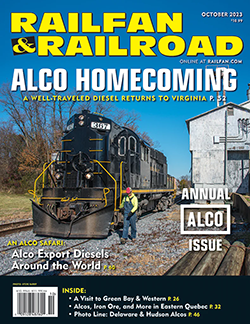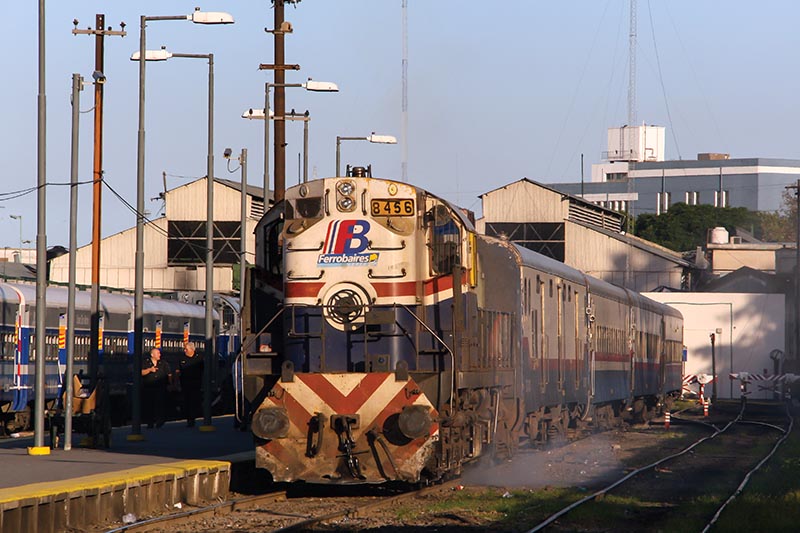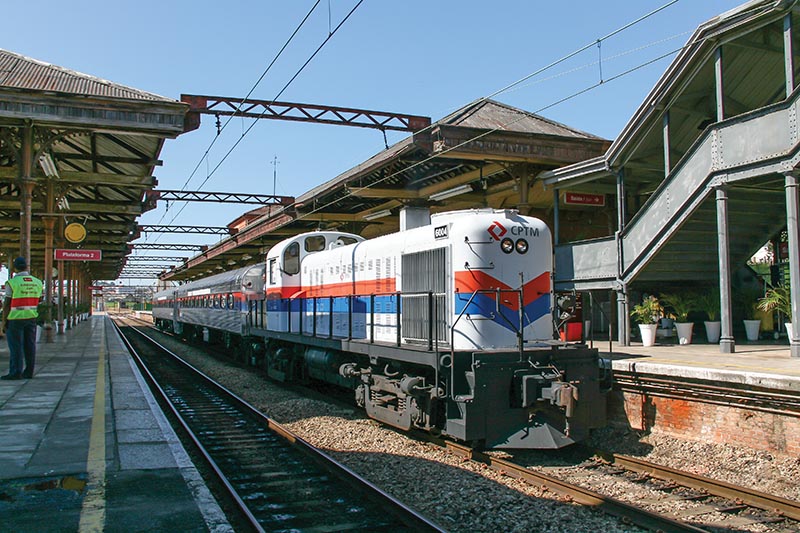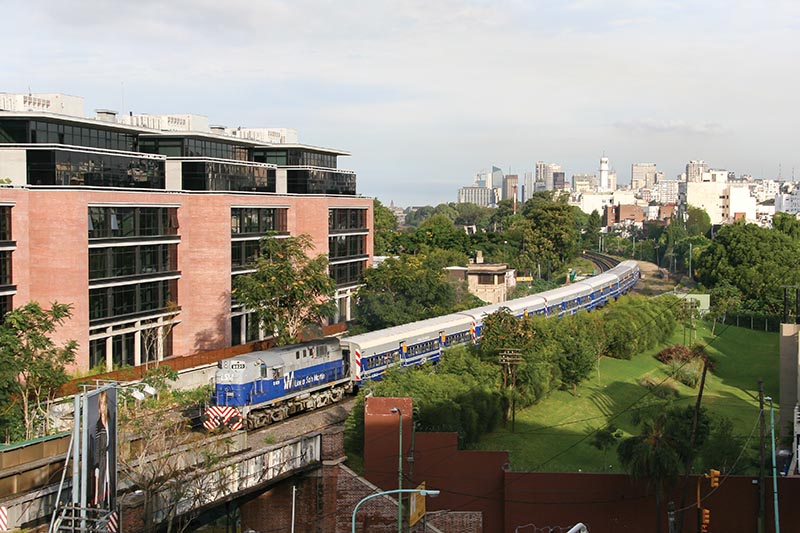 by Vic Lines/photos by the author except as noted
by Vic Lines/photos by the author except as noted
Alco hotspots in North America are well documented. Thousands of photos showcase Alcos strutting their stuff in places such as Scranton, Pa.; Snowflake, Ariz.; and Springdale, Ark., but what about places south of Texas or east of Nova Scotia? Thankfully, Alco exported many of its locomotives to some of the more interesting and exotic locations around the planet, where many of Alco’s designs continue to live on. In fact, until just recently, brand-new locomotives based on licensed Alco designs were still being built in India. Grab your passport and pack your bags as we head to Asia and South America for a look at Alco survivors serving overseas.
Argentina
Just like the American railroads, Argentina’s railroads dipped their toes into the diesel market with cab units, specifically 25 DL500Cs in 1957 (essentially FA locomotives with A-1-A trucks). Those were followed by 130 RSD-16/DL540 road switchers with a 12-251 power plant that began arriving in 1958. Next were 110 RSD-35s/DL535s with a 6-251 prime mover (40 from Alco and 70 from MLW). The Alco ranks swelled in the 1990s with the arrival of RSD-39 hood units from Spain and 22 twin-cabbed DL500s.
Alcos dominated the rail system until the 2000s, when Chinese-built locomotives began to replace the Alcos on freight and passenger trains. Today, the only Alco still in long-distance passenger service is RSD-16 B819 on Tren Patagónico between Bariloche and Viedma. Another RSD-16, B816, has recently been repaired for yard duties outside San Martin station in Buenos Aires.

ABOVE: Argentina — Ferrobaires Alco RSD-16 8456 sits a few minutes before departure with the 6:15pm to Junín on March 16, 2010. Smoke is pouring out of the exhaust breather pipe and doors are held open with string, but still the old girl is going to put in another 510km round trip.
Three freight operators still roster Alcos. NCA (Nuevo Central Andino) has active RSD-16s, but some have been re-engined with EMD power units. Ferroexpreso Pampeanio also rosters RSD-16s but all its RSD-35s are now re-engined with EMD power units. The state-owned Trenes Argentinos Cargas also rosters RSD-16s and RSD-35s (both are still Alco-powered). These can be found around Buenos Aires, the port at Gran Rosario, Junín, Rufino, Justo Daract, and Palmira.
The company also has the only DL500C still in use; it is based at Mendoza and doesn’t stray far. Some of the DL535 units from Spain continue to earm their keep, mostly in yards or on work trains. All the other World Series Alcos and DL500s are either stored or have been scrapped.
Brazil
Brazil used to be home to a few hundred Alcos — everything from the humble S-1 and RS-1 to three exotic five-foot three-inch gauge Alco PAs — one of which is slowly being buried in guano in the old depot at Jundaí, supposedly awaiting restoration.

ABOVE: Brazil — MLW-built RS-3 6004 has arrived at Jundaí with the Expresso Turístico from Luz on March 20, 2010. CPTM has four 244-powered RS-3s on its roster.
Currently, Companhia Paulista de Trens Metropolitanos (CPTM, the commuter rail network in Sao Paulo) operates eight MLW RS-3s, all of which were rebuilt in the late 1990s. Four (6001–6004) retain original power units, while 6005–6008 have been re-powered with Cooper-Bessemer 12-7FDL power units. Both types can be found on work trains. On weekends, one of the Alco-powered examples is called on to work the Expresso Turístico from Luz to one of three different destinations — Jundaí, Mogi das Cruzes, and Paranapiacaba.
SuperVia (the Rio de Janeiro commuter network) owns nine MLW RS-3s, all rebuilt with Cooper-Bessemer 8-7FDL units. SuperVia also has the only surviving Paulista Railway RSC-3 (with original motor) and uses it in work train service alongside the RS-3s.
Companhia Brasileira de Trens Urbanos (CBTU) operates five separate passenger lines in the northeastern part of the country; Alco interest is fairly minimal on most routes. The Belo Horizonte line uses an MLW RS-3 for work trains. The 30-km-long CBTU João Pessoa line runs from Cabedelo to Santa Rita and appears to use a mixture of “VLTs” (DMUs) plus conventional trains hauled by one of four Alco RS-8s. Brazil also has a handful of Alcos preserved in museums that are used on excursion trains, including a Paulista Railway Alco RSD-8…



